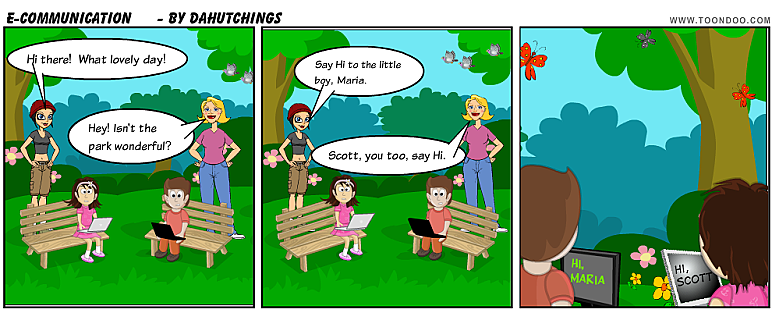Background
Many, many moons ago, I had my first experiences with computers. In grade 11, a new course was created- computer class. I joined and quickly discovered the challenge of if..then programming. There was a thrill to make a stick figure slide and jump over O’s. As the year progressed, the programs got harder, and the results were more spectacular, at least, on the Commodore 64. I was hooked. Passing on a scholarship to the DeVry Institute of Technology in Toronto, I started a double degree of Computers and French at Memorial. But my love for Mathematics prevailed, as I watched the computer scene grow with leaps and bounds all around me. Many years and jobs went by until I returned to Memorial to pursue Education.
While teaching, my desire to understand and explore computers returned. By then, the Microsoft age had taken over and systems were more user-friendly. Society was hooked on using their electronic devices. I bought my first computer in 2000, when a friend put together the best components at the time. I began investigating how I could incorporate this new technology into my teaching. I also realized that the world around me had gone digital. Every facet of our lives had been invaded with technology. The culture, in which I had grown up, had changed. Kids were not outside playing anymore. When they were, little boxes were clamped in their hands or pressed to their ears. At the hospital, one night my wife encountered two 11-yr old children, with their parents. When told to acknowledge each other, the children used their DS’s, much like depicted in the cartoon below.

We were amazed, and yet not surprised. All around me, I watched what I believed to be poor practices on technology. I began to wonder if there was too much technology. How were these new devices – this new digital culture affecting the children? By then, I had children of my own and wanted to know the pros and cons. Hence, I applied for higher learning with the MET program.
I began to investigate the pitfalls of using technology in our society, and in our classrooms. Not long into the MET program, I was introduced to Jacques Ellul and Robert Louv. I was instantly intrigued with Ellul’s, Betrayal of Technology, and how technology controls us. Louv’s Nature-Deficit Disorder seemed to explain the differences in cultures, and reinforced my thoughts on the importance of natural play. I discovered Dr Susan Greenfield and her ideas of how brain functioning has changed in our digital youth. More and more, I found articles and research offering the negative (medical, social, intrapersonal, etc.) aspects of our digital society. Yet, I knew I could not forsake how technology draws our youth. Hence, I decided to analyze how to use technology safely and securely in our schools.
Future
How can I utilize the virtual world to enhance the learning experiences of the real world? For this course, I wish to further explore digital citizenship. I want to develop a series of lessons on tech-etiquette and proper tech use. It is important that students understand the ramifications of improper techuse. As educators, we need to educate our youth about such issues as cyber-bullying, stranger danger, sexting, information overload, techaddiction, texting and driving, and the list goes on. I am also curious on the appropriate age to start using technology. Can children be too young to use technology? Are we hampering or altering their growth- physically or developmentally- when we utilize technology in their learning? I theorize that there is an appropriate age for using technology. I contend that pre-school children should focus their learning on social development and social interactions that they will not achieve through use of technology. As the children age then technology should be graduated into their curriculum. More research may verify these ideas.
For the elementary students, I would like to incorporate a closed system LMS (Moodle) and websites that draw on students’ curiosity and skill with technology. I feel that I can be a better guide in the process of using technology in education if I can successfully use the technology myself. As a personal challenge, I would like to understand how to use html and other codes. I think this comes from my early experience with programming, or from my interest in problem solving. Time would be the major resource needed. I would need time to prepare, explore and assess my activities. In order to get the best engagement from the students, it would be important to have equipment that is up-to-date and gliche-free. I understand that technology is not 100% problem-free. So the importance of having staff onsite and on call to help the classroom teacher utilize the technology is important. My school board may have to offer more money towards personnel and equipment in order to have technology more incorporated in the classroom. My school administration would have to offer a flexible schedule to the personnel, as well as more time for professional development. Will that happen, is this possible, or am I dreaming of a fantasy school?
References:
Ellul, J (n.d.) The Betrayal of Technology. Retrieved from: https://www.youtube.com/watch?v=LdogID589Mk
Greenfield, S. website: http://susangreenfield.com/science/
Hutchings, D. (2011). E-communication. Image created in www.toondoo.com
Louv, R ( 2008 ) The Last Child in the Woods-Saving Our Children From Nature-deficit Disorder. Algonquin Books. ISBN – 10: 156512605X